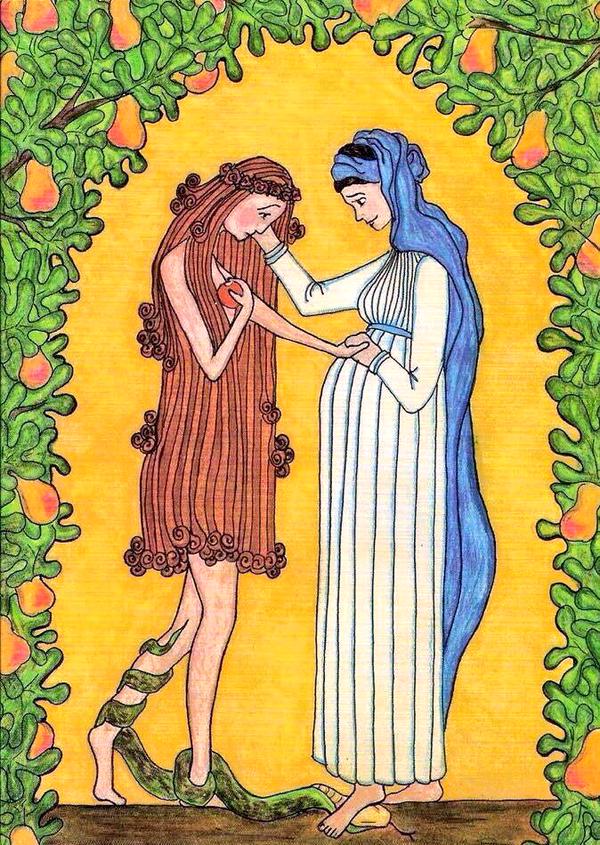Somebody posted this on Twitter yesterday and I thought it particularly moving and powerful. It is an image of Eve meeting a pregnant Virgin Mary. A few things stand out. First, the expressions on their faces: Eve looking shamed and distraught, holding the apple, yet hopeful and awestruck with raised eyebrows as she puts her hand on Mary’s stomach. And Mary looks understanding and consoling, putting a hand of comfort on Eve’s cheek. Then as you look at their feet: the serpent has Eve in its coils signifying his grasp on the sons of man and the death that he brings, yet his head is under Mary’s heel. I saw one comment on Twitter bemoan this depiction by rightly pointing out that it is Jesus, not Mary, who crushes the serpent’s head. But I would counter that by saying that the entire focus of this powerful image is on the coming baby. I take the crushed head to mean that through the baby that is coming, the devil will be defeated. Christmas does indeed signal the beginning of the end for the devil, and it was through Mary that the King of all Kings comes.
Check it out. A truly moving idea for a Christmas image.


I just learned something relevant to your picture. It turns out that at some point in the late classical/early medieval period, Latin copies of the Bible began to shift their wording (for unknown reasons) found in Genesis 3:15 in a subtle but consequential way. The correct “And I will put enmity between you and the woman, and between your seed and her seed; he shall bruise you on the head, and you shall bruise him on the heel,” became “And I will put enmity between you and the woman, and between your seed and her seed; he shall bruise you on the head, and you shall bruise her on the heel.” The change centered on a single word, a single letter even: “ipse” became “ipsa”.
Early on, when Latin commentators remarked on the “feminized” text (unaware of the change), they spoke of the prophecy as something concerning the Church: the Church (understand as feminine, the bride of Christ) would crush Satan’s head by the power of God in Christ (cp. Rom. 16:20). But eventually, later commentators took the text to refer to Mary. (https://goo.gl/cu08oM)
It seems that all modern translations have corrected the error, including those translations approved for use in Catholic churches by the USCCB. But the New American Bible draws attention to the issue in a footnote: https://goo.gl/GHDZZ5 It seems that your picture above is perpetuating an old artistic motif that depended, textually speaking, on those old Latin translations.
Very interesting! I did not realize that.